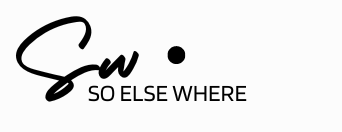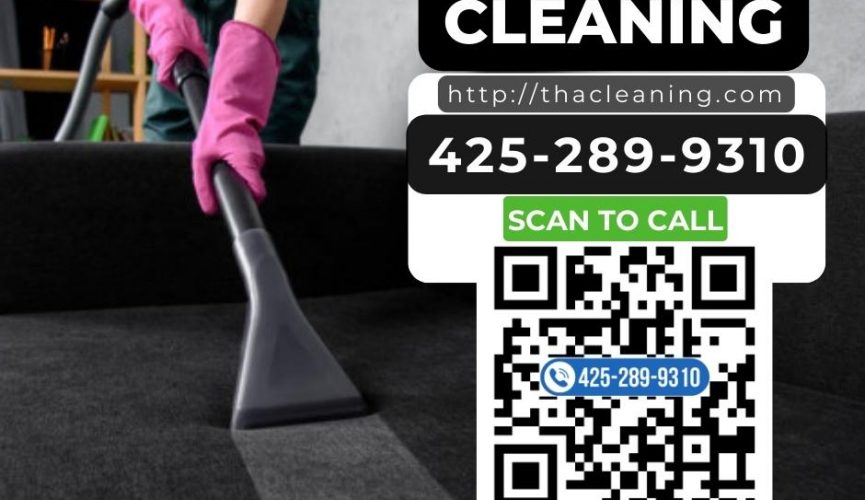In our fast-paced world, health and hygiene have become more critical than ever. One often overlooked aspect of maintaining a healthy lifestyle is the role of cleaning in disease prevention. Clean environments are aesthetically pleasing and play a pivotal role in keeping harmful pathogens at bay. For instance, hiring professional house cleaners Seattle ensures a thorough and effective cleaning routine. This blog post delves into the multifaceted connection between cleaning and disease prevention, exploring the science behind it and providing practical tips for creating a healthier living or working space.
Pro Tip: Regular cleaning enhances the visual appeal of your surroundings and acts as a potent preventive measure against diseases. Establishing a routine cleaning schedule can significantly contribute to a healthier lifestyle.
Understanding the Germ Menace
To comprehend the significance of cleaning in disease prevention, it’s crucial to understand the invisible threats that lurk around us. Pathogenic bacteria, viruses, and fungi can survive on surfaces for varying durations, posing a constant risk of infection. For instance, the flu virus can linger on surfaces for up to 48 hours, and the COVID-19 virus has survived on certain materials for days.
Pro Tip: Be mindful of frequently touched surfaces like doorknobs, light switches, and countertops. Regularly disinfecting these high-touch areas can substantially reduce the risk of infections.
The Link Between Cleanliness and Immune System Health
A clean environment is not only about aesthetics; it profoundly impacts our immune system. Studies have shown that prolonged exposure to unclean surroundings can weaken the immune response, making individuals more susceptible to infections. Conversely, a well-maintained and sanitized environment, facilitated by professional house cleaning Seattle WA, strengthens the immune system, providing an additional defense against diseases.
Pro Tip: Incorporate various cleaning methods, including dusting, vacuuming, and sanitizing, to ensure a comprehensive approach to maintaining a clean and healthy space.
Role of Cleaning in Controlling Allergens
Allergens present in dust and dirt can trigger a range of allergic reactions, from sneezing and itching to more severe respiratory issues. Regular cleaning, including dusting and vacuuming, helps control and eliminate these allergens, creating an environment conducive to respiratory health.
Pro Tip: Invest in a high-quality vacuum cleaner with a HEPA filter to effectively capture and trap allergens, preventing them from being released back into the air.
Cleaning as a Defense Against Foodborne Illnesses
The kitchen, often called the heart of a home, can also be a breeding ground for harmful bacteria if not properly cleaned. Foodborne illnesses are a significant concern, and thorough cleaning practices in the kitchen can prevent cross-contamination and the spread of bacteria.
Pro Tip: Wash kitchen surfaces and utensils with hot, soapy water, and regularly sanitize cutting boards to avoid bacterial contamination.
The Impact of Clean Air on Respiratory Health
Indoor air quality is a critical factor in preventing respiratory diseases. Dust, mold, and other pollutants can accumulate over time, leading to respiratory issues. Regular cleaning, including proper ventilation and air purification, is pivotal in maintaining clean air.
Pro Tip: Use air purifiers with HEPA filters to remove airborne particles and improve indoor air quality. Additionally, ensure proper ventilation by regularly opening windows and doors.

Cleaning in Healthcare Settings
In healthcare settings, where the risk of infections is heightened, meticulous cleaning practices are imperative. Hospitals and clinics follow stringent cleaning protocols to create a sterile environment that minimizes the spread of diseases among patients and healthcare professionals.
Pro Tip: Adopt some of the cleaning practices used in healthcare settings at home, especially in areas with high traffic and frequent contact.
The Psychological Impact of a Clean Environment
Beyond the physical aspects, the psychological impact of a clean environment on mental health is noteworthy. A clutter-free and clean space can reduce stress levels and enhance overall well-being.
Pro Tip: Take a holistic approach to cleaning by decluttering spaces regularly. A tidy environment can positively influence mental health.
Cleaning in Educational Institutions
Educational institutions, with their high-density populations, are susceptible to disease outbreaks. Regular cleaning and sanitation efforts in schools and universities are essential to create a safe and healthy learning environment.
Pro Tip: Encourage students and staff to practice personal hygiene, such as regular handwashing, to complement institutional cleaning efforts.
Eco-Friendly Cleaning Practices
While cleaning is crucial for disease prevention, choosing cleaning products also matters. Many conventional cleaning agents contain harsh chemicals that can adversely affect human health and the environment. Eco-friendly cleaning practices offer a sustainable alternative.
Pro Tip: Opt for environmentally friendly cleaning products or DIY solutions using natural ingredients like vinegar and baking soda.
The Role of Technology in Cleaning
Advancements in technology have led to the development of innovative cleaning tools and devices. Technology plays a pivotal role in enhancing the efficiency and effectiveness of cleaning practices, from UV-C light sanitizers to robotic vacuum cleaners.
Pro Tip: Explore and integrate technology-driven cleaning solutions to complement traditional cleaning methods and improve overall hygiene.
Cleaning in Public Spaces
Public spaces, such as shopping malls, public transportation, and recreational areas, witness high foot traffic. Maintaining cleanliness in these areas is crucial to prevent the spread of infections within the community.
Pro Tip: Practice personal hygiene in public spaces, including using hand sanitizers and avoiding touching your face after contact with public surfaces.
Cleaning and the Aging Population
As individuals age, their immune systems may weaken, making them more susceptible to infections. Clean living environments are particularly crucial for the elderly to prevent the onset and spread of diseases.
Pro Tip: Implement safety measures like non-slip mats and handrails in addition to regular cleaning to create a safer living space for seniors.
Cleaning and Pest Control
Pests pose a physical threat and bring diseases into homes and workplaces. Integrated pest management and regular cleaning are essential to keep these unwanted visitors at bay.
Pro Tip: Seal cracks and gaps in your home and promptly address any signs of pest infestations. Regular cleaning can deter pests from finding a hospitable environment.
Cleaning in Disaster Response
In the aftermath of natural disasters, maintaining a clean environment becomes even more critical. Floods, hurricanes, and earthquakes can spread waterborne diseases and other infections if proper cleaning and sanitation measures are not promptly implemented.
Pro Tip: Familiarize yourself with basic disaster response cleaning practices, including safe water storage and sanitation methods, to protect yourself in emergencies.
Cleaning and the Workplace
Workplaces are communal spaces where individuals spend a significant portion of their day. Maintaining workplace cleanliness is conducive to employee well-being and crucial for preventing the spread of illnesses within the workforce.
Pro Tip: Encourage a workplace cleanliness culture, including regular disinfection of shared spaces and personal workstations.
The Economics of Cleaning
The economic implications of inadequate cleaning are often underestimated. The cost of treating preventable illnesses, productivity loss due to sick days, and the burden on healthcare systems underscore the importance of proactive cleaning measures.
Pro Tip: Consider the long-term cost savings associated with preventive cleaning measures compared to the expenses incurred in treating diseases that could have been avoided.
Cleaning in Developing Countries
Access to proper sanitation and hygiene practices is limited in many developing countries. This results in a higher prevalence of preventable diseases. International efforts to improve sanitation infrastructure and promote basic cleaning practices can significantly impact public health.
Pro Tip: Support organizations working towards improving sanitation in developing countries through donations or volunteer efforts.
The Future of Cleaning Technologies
Looking ahead, the future of cleaning will likely be shaped by technological advancements and innovative solutions. From self-sanitizing surfaces to smart cleaning devices, the evolving landscape of cleaning technologies holds promise for more effective disease prevention.
Pro Tip: Stay informed about emerging cleaning technologies and consider incorporating them into your routine as they become accessible.
Cleaning and Antibiotic Resistance
The misuse and overuse of antibiotics have led to the emergence of antibiotic-resistant bacteria. Maintaining clean environments is pivotal in reducing the reliance on antibiotics for treating infections and preventing the further spread of antibiotic resistance.
Pro Tip: Practice good hygiene to prevent infections and reduce the need for antibiotics. This, in turn, contributes to the global efforts against antibiotic resistance.
A Call to Action
In conclusion, the role of cleaning in disease prevention cannot be overstated. From the microscopic threats of pathogens to the visible impact on mental well-being, maintaining a clean environment is a holistic approach to promoting a healthier society. By understanding the intricate connection between cleanliness and disease prevention and implementing proactive cleaning measures, individuals can contribute to a safer and healthier world.
Pro Tip: Take a proactive stance in promoting cleanliness in your community. Share information on the importance of cleaning in disease prevention and encourage others to adopt healthy cleaning practices.

